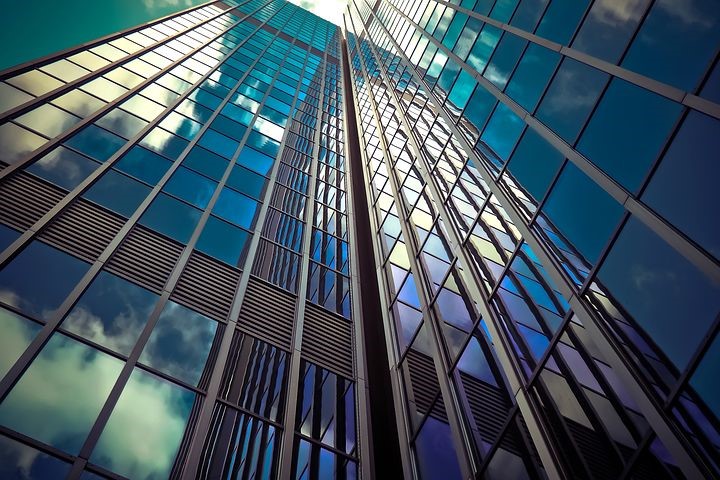
People who live or work in high-rise residential or commercial buildings face very specific disaster-preparedness challenges. Emergencies such as fires, bomb scares, weather-related incidents and earthquakes present special dangers for high-occupancy buildings, such as dormitories, apartment homes, condominiums and office complexes. The best defense is a coordinated emergency-response plan that identifies potential risks and outlines the best response. With limited access to egress, if you’re in a high-rise when disaster strikes, you might need to stay in the building until the emergency passes. Or, if evacuation is necessary, you would need to quickly find the exit.
The good news is that high-rise building requirements include more working sprinklers and fire alarm equipment than non-high-rise facilities. And if your building owner or manager subscribes to the Allied Universal Fire Life Safety Training System, first responders will have access to building-specific instructions, which will help in emergency situations. To help make sure you are prepared, we have assembled some tips to keep you safe.
In all situations:
- Take responsibility for your own safety. This is important because, in some situations, first response may be delayed in reaching you.
- Familiarize yourself with the safety features of your facility (fire alarms, sprinklers, voice communication procedures, evacuation plans and alarm response).
- Make sure exit and stairwell doors are clearly marked, remain unlocked and are free from debris and clutter which could obstruct the walkway.
- If an official makes an announcement, listen carefully and follow directions.
- If you are told to evacuate, go outside and gather at the pre-arranged meeting place.
- Stay put until an official instructs you it is safe to return to the building.
For Fire:
- The National Fire Protection Association (NFPA) reports there are approximately 16,000 to 20,000 fires in high-rise buildings each year. This represents 2 to 4 percent of all building fires. If you are in a high-rise when fire breaks out:
- Well in advance of an emergency, find the locations of all available exit stairs from your floor in case the nearest one is blocked by fire or smoke.
- Don’t automatically run for the stairs. Stay put and wait for instructions.
- If it is clear you should evacuate, pull the alarm on your way out, to notify the fire department and your neighbors. Don’t assume someone else will handle this.
- If the fire alarm sounds, feel the door before opening and close all doors behind you as you leave. If the door is hot, find another way out. If it is cool, leave by the nearest exit.
- Instead of taking the elevator, use the stairs in a fire, unless the fire department instructs otherwise. Some buildings come equipped with elevators, which are intended for emergency use. Such elevators should be clearly marked.
- If someone is trapped in the building, notify the fire department.
- If you are unable to evacuate your apartment or high-rise workplace in a fire due to flames, smoke or a disability, stuff wet towels or sheets around the door and vents to keep smoke out. Call the fire department to alert officials to your location.
- Slightly open a window and wave a bright-colored cloth to signal your location. However, be prepared to close the window if smoke conditions worsen.
To Shelter in Place:
- In some emergency scenarios, you may need to stay put instead of evacuating.
- If you are in a high-rise building during a flood or storm surge, stay on floors located just above flood waters.
- In case of a hurricane or other situations which could produce strong winds, stay in hallways or interior rooms. Also, remember, modern high-rise buildings are built to sway with weather. So, the higher the floor, the more wind you will likely feel.
- If an earthquake occurs while you are in a high-rise building, stay put. Studies in Japan (Tokyo is home to 2,390 high-rise buildings and 114 skyscrapers) reveal that traversing as little as 10 feet during an earthquake significantly increases the odds of injury. Take Cover. The Great ShakeOut teaches participants to drop, cover and hold on. This is great advice during an earthquake, in any size building. If you are in a high-rise building when an active shooter incident occurs, run, hide or fight. When it is safe to do so, call 911 and describe the shooter, location, and weapons.
High-Rise Safety Resources:
- FEMA Building Code Resources
- National Fire Protection NFPA High-Rise Building Safety
- Occupational Safety & Health Administration (OSHA) Evacuation & Sheltering-in-Place
About the Allied Universal Fire Life Safety Services System
No matter the type of emergency you may face while in a high-rise building, take steps to make sure you are safe. Our interactive, building-specific e-learning program helps commercial, residential, educational, institutional, government, retail and industrial buildings with compliance to fire life safety codes and rewards building occupants instantly! It’s a convenient and affordable solution to the training needs of your facility.









